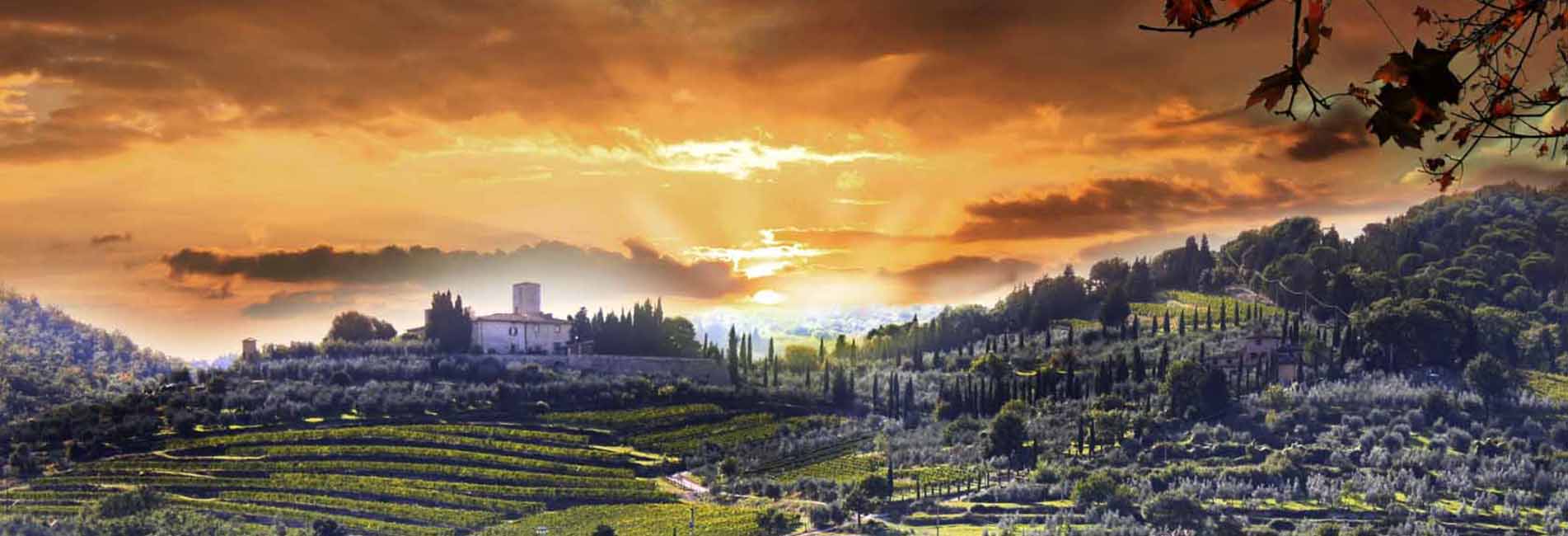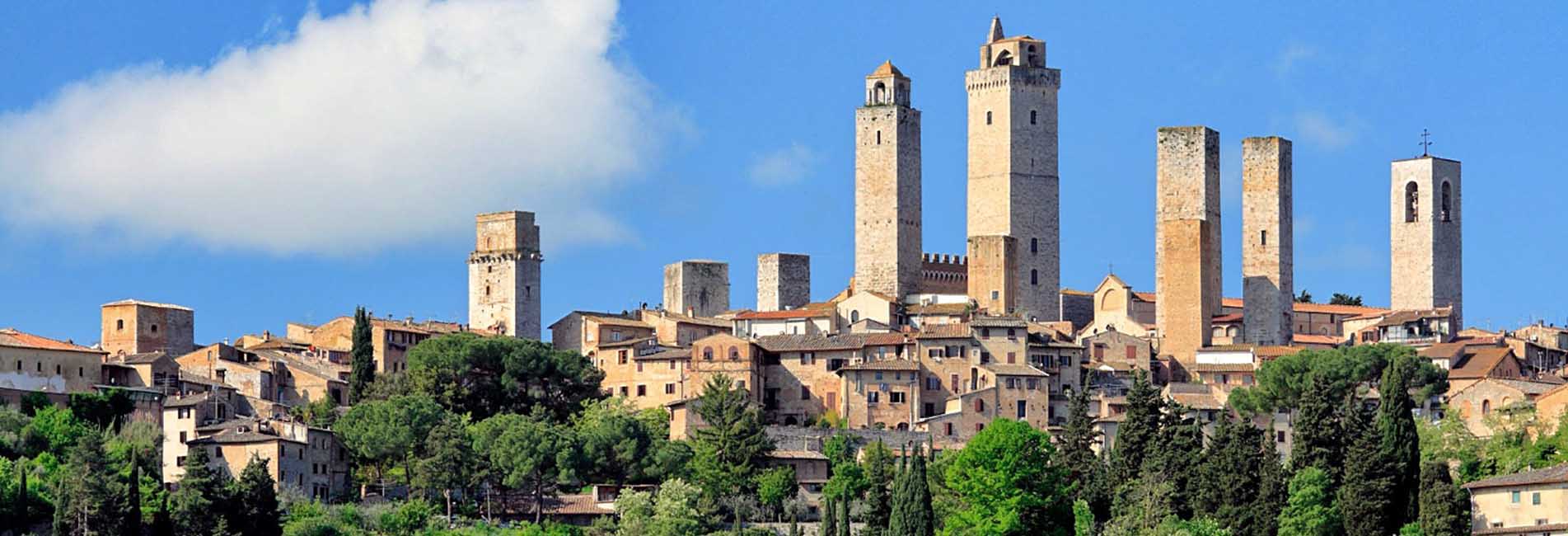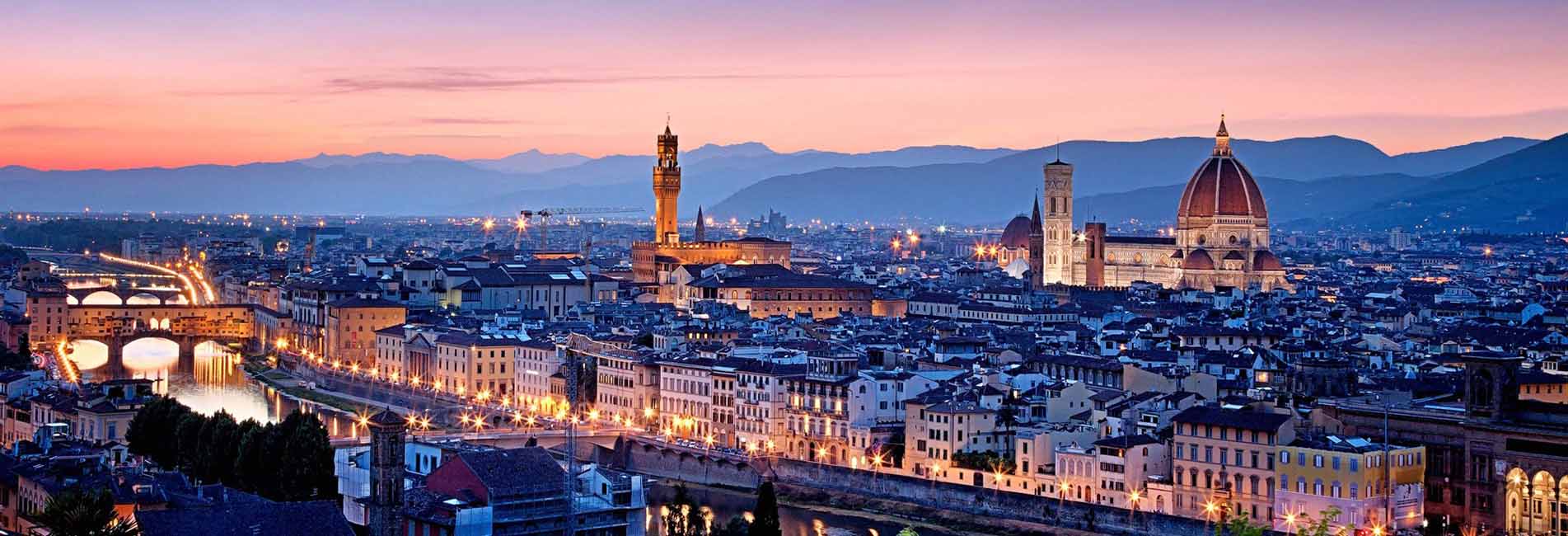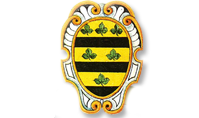Siena
PIAZZA DEL CAMPO
The universal symbol of the city, the main square, called by everyone “ Il Campo”, was built on the intersection between three main roads that led to Siena and which were designated to become a neutral territory where festivals, and political or civil manifestations could be held. With its particular shell like shape, it has a circumference of 333 metres,it is paved with red bricks in a fishtail design divided by 10 lines of white travertine, thus forming 9 sections which seem to point towards the Palazzo Pubblico, seat of the civil government.
Each section represents one of the 9 governors who exercised their power during the “ Governideinove “ (“ the governments of 9”), for a long time considered one of the most stable and peaceful governments in Italy. From an artistic point of view, the sections were meant to represent the folds of the Virgin Mary’s cloak, who is not only the patron saint of the city, but who is also considered the “ sommagovernante” (“superior governor”) of Siena. In Piazza del Campo the famous PALIO DI SIENAis held, still the most important appointments for all the citizens of Siena. The PALIO is an exciting horse race that takes place every year in July and August and whose origin seem to date back as early as the sixteen hundreds.
IL DUOMO DI SANTA MARIA ASSUNTA
The Duomo of Siena, or the Cathedral of Santa Maria Assunta, isone of the most notable examples of Italian churches in the Gothic-Roman style. Imposing and almost blinding due to the vast use of white marble, the Duomo di Siena is fascinating from the exterior as much as at the interior. You certainly won’t be disappointed when you go inside: the Cathedral is enhanced by signed works by Donatello, Nicola Pisano, Michelangelo and Pinturicchio. The interior, like the exterior, is decorated in white and dark green almost black marble, which are the colours that represent Siena.
LIBRERIA PICCOLOMINI
Situated inside the Cathedral, the LibreriaPiccolomini is dedicated to Pope PioXI. Easily you can bestruckedby the richness of its wall paintings, carried out by Pinturicchio and his apprentices, among whom RaffaelloSanzio, in 1500. Here you can admire some scenes from the life of Pope PioXI, and the ceiling is also painted, and shines with the abundant use of the colour gold.
IL BATTISTERO
The BATTISTERO of Siena is named after San Giovanni and was built in 1300 when they decided to enlarge the Duomo. To reach the Battistero you take the steps from piazza San Giovanni and you can’t help but notice that the marble façade of the Pieve has been left unfinished. The interior of the Battistero is magnificently decorated with a cycle of wall paintingsby Renaissance artists from Siena. The most precious masterpiece conserved in the Battistero is without doubt the splendid Baptismal Font which was created by some of the most important Renaissance sculptors: JacobodellaQuercia, Lorenzo Ghiberti and Donatello.
LA TORRE DEL MANGIA
One of the most beautiful views of the city is undoubtedly that from the Torre delMangia, situated in the Piazza del Campo. It is the civil tower of the Town Hall. It is one of the oldest old towers inItaly, measuring 87 metres. According to what was written by Ranuccio Bianchi Bandinelli, the Torre delMangia, although starting from a lower point, it reaches the same height as the bell Tower of the Duomo. This was meant to symbolize the acquired balance between celestial and earthly powers, neither one being superior to, or imposing on the other. The climb is a little tiring, especially if you are not very fit. You have to climb 400 steep close steps but the 360° view from the top is spectacular to say the least and you will be well rewarded for your efforts.
MUSEO DELL’OPERA DEL DUOMO
The Museodell’Operadel Duomo is one of the oldest private museums in Italy and is located in the right nave of the Cathedral, in what was probably intended to be an enlargement of the design for the “New Duomo”, which was never completed. Here you can admire the original fourteenth century statues on theDuomo façade, among which are the ones carried out by Giovanni Pisano andDuccio da Buoninsegna. Tha last one is also the author of PALA DELLA MAESTA’ that is one of the most important masterpieces of the early fourteenth century.
The most popular part of the museum is the “FACCIATONE”, the panoramic terrace on the top, from where you can admire the magnificent view of the Duomo, the roofs of Siena and the surrounding hills. You may have to wait a little in the queue before climbing the steep steps, but the view from the top makes the wait worthwhile.
SIENA AND ITS SWEETS
There are three sweet excellencies that Siena is justifiably proud of and that all the world with a sweet tooth appreciates with enthusiasm, especially during the Christmas period.
The CAVALLUCCI, biscuits made from flour, honey and sugar, in the shape of a partially squashed half apricot. They are not too soft, it seems that they take their name from the use made of them in the old changing posts where they changed horses, as far back as the XVIcentury .
The RICCIARELLI, elegant biscuits, quite thin, soft, crumbly and delicate in the shape of small lozenges, made with a marzipan base. It seems that one of the first marzipan biscuits was given a somewhat curled shape, like that of oriental slippers and this is how they acquired their name. Their exquisite taste comes from orange peel and candid lime which amalgamates perfectly with the almonds.
THE PANFORTE, a sweetbread rich in spices, flavours and aromas. The name comes from its medieval ancestors, at that time the sweetbreads were madewith the water that was used to rinse the jars that contained honey and pieces of fresh or dry fruit were added. The crusades brought unknown spices from the XIII century onwards. The first peopleto use these were in fact the “ speziali”. Inexistent medicinal virtues were attributed to pepper, cloves and cinnamon and they were also said, truthfully, to give new flavours to food and the possibility to preserve it longer. Their origins therefore are the result of experiments and private recipes which became more refined over time in accordance with the increasing availability of the ingredients to hand. A sort of evolution in the sweet production, carried out principally in monasteries and antique spice shops.
Borgo Filicardo in short
16 apartments furnished with care respecting the Tuscan tradition and equipped with all modern comforts.


 italiano
italiano Francais
Francais English
English



 Borgo Filicardo is pleased to offer free WI-FI connection in all areas, in the open spaces of the Borgo, in the common areas and of course in the apartments!
Borgo Filicardo is pleased to offer free WI-FI connection in all areas, in the open spaces of the Borgo, in the common areas and of course in the apartments!